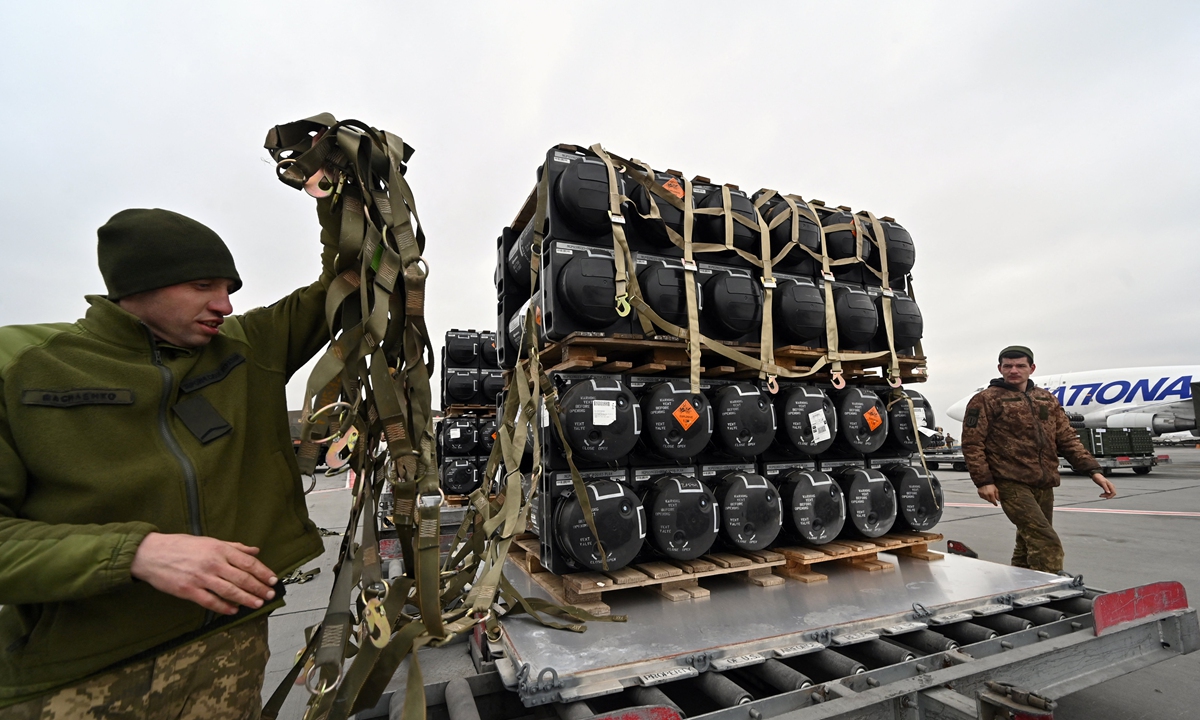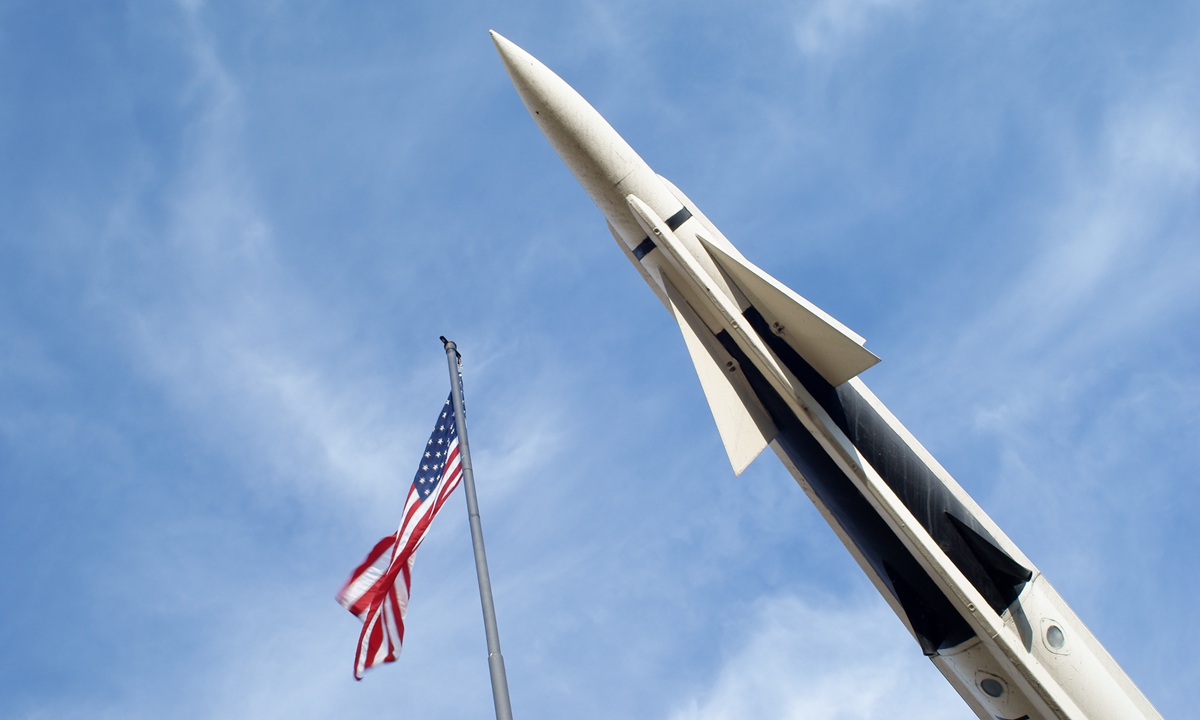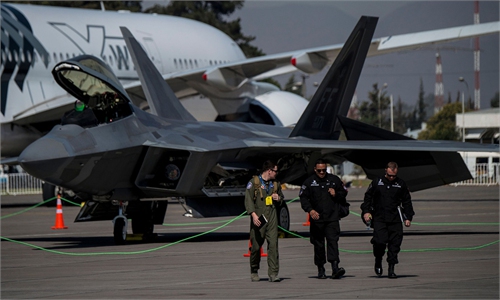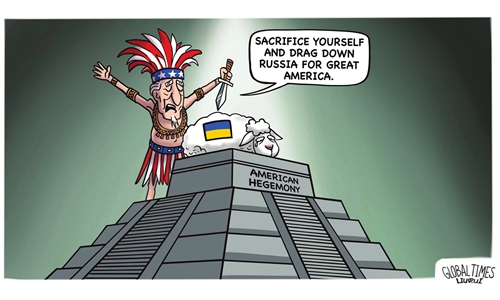IN-DEPTH / IN-DEPTH
Weapons sent by US and NATO may fall into dark net and even to terrorists, leading widespread and unbearable cost
Feeding armed conflict

Ukrainian servicemen unload a Boeing 747-412 plane with the FGM-148 Javelin, anti-tank missiles provided by US to Ukraine as part of a military support, at Kiev's airport Boryspil on February 11, 2022. Photo: AFP
Heartless terrorists turned dreadful mercenaries, weapons scattered in a chaotic battlefield… These disturbing signs showed that a big, horrible disaster is sprawling in the Russia-Ukraine conflict.
Executive Director of Europol Catherine De Bolle told German media in late May that they were very concerned that the military equipment the West is sending to Ukraine will end up on the black market and in the hands of terrorists and criminals.
Previous reports show that the Russian Foreign Intelligence Service (SVR) found the US was stepping up its efforts to recruit members of international terrorist groups, including extremist organizations, as mercenaries to fight in Ukraine and take part in sabotage operations against Russian forces.
After US President Joe Biden formally signed the $40 billion aid package to Ukraine, this worry became more pressing. Can the flow of weapons from NATO and the US to Ukraine be monitored? Is it only a matter of time before terrorist groups take hold of those weapons? Who is laughing behind Europe's worried back?
Several experts told the Global Times that it is difficult to control the flow of weapons on the battlefield. They noted that not only Europe, which has been deprived of its security autonomy by the US and NATO, but also the third world countries, will suffer the costs.
Those who prefer to live by the sword will fall by the sword. While the military-industrial complex profiteers, it is only a matter of time before this backfires, experts noted.

Photo: VCG
Flow of illegal weapons
Jürgen Stock, the head of Interpol, warned that once the Russia-Ukraine conflict ends, guns and heavy arms will flood the international market, according to a Guardian report.
"Once the guns fall silent [in Ukraine], illegal weapons will come. We know this from many other instances of conflict. Criminals are even now, as we speak, focusing on them," said Stock, stressing that the illegal weapons flowing into the criminal market will create a challenge.
Several days ago, De Bolle expressed the same concern in an interview with the German newspaper Die Welt am Sonntag. She said the arms delivered from the EU to Ukraine could easily fall into the hands of criminals which would imperil the internal security landscape of the EU.
Along with weapons are bloodthirsty criminals. According to the SVR, in April about 60 ISIS militants, aged 20 to 25, were released from prisons controlled by Syrian Kurds with the intervention of American intelligence services.
They were "transferred to the US military base of Al-Tanf, located in Syria near the border with Jordan and Iraq, for combat training with the aim of a subsequent deployment to Ukraine," according to a statement from the SVR.
Analysts pointed out that the frantic fascist "dream" of killing is the same on both sides of the Atlantic.
The far-right "white supremacists" in the US now also threaten ordinary people's lives. The recent spate of mass shootings in the US has made the possible influx of illegal weapons from Ukraine more even frightening.
What would it look like, on both sides of the Atlantic, if a large amount of unregulated weapons flows from Ukraine to extremists around the world? Regardless of this question, it seems that the US does not care.
On May 21, during his visit to South Korea, Biden signed into law a $40 billion aid package for Ukraine.
Previously, the US Senate and House of Representatives had quickly passed the bill with unusual "efficiency."

Photo: VCG
A heavy price to bear
What weapons have the US and other NATO countries provided since the Russia-Ukraine conflict erupted? A June 5 report by Al Jazeera titled "Weapons to Ukraine: Which countries have sent what?" said that US aid accounts for a significant portion, including 1,400 Stinger anti-aircraft systems, 5,000 Javelin anti-tank missiles, several thousand rifles with ammunition, and a range of other equipment.
However, some of the Western weapons sent as aid to Ukraine are being sold on the dark net. ASB Military News reported on June 2 that some of the arms the US and NATO donated are being sold to buyers in the Middle East and North Africa. According to the Pentagon's 2021 budget, each Javelin missile costs $178,000. However, these missiles are now listed for sale on the dark net for just $30,000, ASB Military News revealed.
"Many people are taking these weapons and selling them to terrorist organizations on the black market. As a result, these weapons will be used in the future to kill people in Europe and other places," US journalist John Mark Dougan confirmed the news in an interview with the Global Times, saying it is almost impossible to monitor the circulation of these weapons. Dougan is a former US Marine who traveled to Ukraine as a reporter after the conflict broke out.
"The management of weapons on the Russian-Ukrainian battlefield is in a very chaotic state and the whereabouts of these weapons cannot be traced at all," Li Wei, an expert on national security at the China Institute of Contemporary International Relations, told the Global Times.
Li pointed out that the Russian army, as the regular army, has a set of weapons management processes. On the side of the Ukrainian army, the situation is more complicated. In addition to the regular army, there is the Azov Battalion and other militia organizations. "At the beginning of the conflict, some weapons were even distributed to civilians," he said.
Li noted that in the process of delivering aid, Western countries just handed them over to the Ukrainian government, but as these weapons are funneled into the conflict and their final destination, there lacks the ability and interest to monitor the situation.
Where might these weapons go in the future?
Akila al-Taya, an Iraqi security expert, recently told Russian news agency Sputnik that US weapons currently supplied to Ukraine are likely to be smuggled to extremists inside or outside Ukraine, as well as to terrorist groups, including the Islamic State, to arm them or create new organizations under other names.
"If these weapons are in the hands of terrorist organizations and criminal gangs, this could strengthen European separatism and spark internal conflict. Europe would be held accountable for US military actions and its own mistakes," He Zhigao, a research fellow with the Institute of European Studies at the Chinese Academy of Social Sciences (CASS), told the Global Times.
He noted that the influx of refugees after the Ukraine crisis has raised the possibility of terrorist attacks, adding that "the overlap of the refugee crisis, the influx of weapons, and the threat of terrorism is a scenario that Europe is extremely unhappy to foresee."
"These episodes of chaos prove that the autonomy of Europe's security has obviously been lost during the Russia-Ukraine conflict," Li told the Global Times. Looking back, whenever Europe has tried to achieve security autonomy, the US has caused trouble to block the process, with NATO as a key culprit.
"Russia tried to improve relations with Europe after the collapse of the Soviet Union, but in the US' view, such an improvement could be a threat to its global hegemony," Li said, noting that "the US wanted to re-awaken 'Russophobia' in Europe, and the conflict between Russia and Ukraine has made the US' plan perfectly realized."
"For Europe, it is necessary to define and maintain its core interests more clearly. If they blindly follow the pace of the US, their security autonomy will be a fantasy, let alone being an independent actor with global influence," Li said.
He believes that Europe should strengthen strategic autonomy and transfer its security concepts. Europe should also support the role of the UN in the field of conventional arms control with major powers including China, He said.
Doomed to be backlashed
In addition to the deepening anxiety in Europe, frequent gun violence has hit the US recently.
At least 13 mass shootings occurred in the US over the last weekend, resulting in 16 deaths and more than 70 injured. So far, there have been 246 mass shootings in the US this year, according to a report by CNN on June 6.
Scattering guns in foreign countries while being unable to ban guns domestically, the US' practice at home and abroad seems to be linked by a "dark line."
"The dark line shows that some people want to see the consequences of the proliferation of guns," Zhang Yifei, an assistant research fellow with the Institute of American Studies of the CASS, told the Global Times, highlighting that by "selling guns globally and not banning guns at home, the biggest winner would be the military-industrial complex of the US."
The American political magazine "Jacobin" recently published an article indicating that it is difficult to say how much of the $40 billion in US aid will ultimately go directly to Ukraine. But one thing is clear. For arms manufacturers, what is happening in Ukraine is a "bonanza."
Meanwhile, sending a mixed bag of mercenaries into the battlefield seems like the last piece of the puzzle to fully implement the whole plan.
Just as De Bolle assessed, "people who are going to fight in Ukraine do not represent a homogeneous group but rather adhere to different ideologies."
Zhang said that the biggest hidden danger of US' approach is that those who hold dollars and American weapons must be pro-US. "Those who gather with a common interest will naturally disperse when their interests are exhausted. Therefore, backlash will be a sure outcome for the US," he said.
"The US is ready to use any means to achieve its geopolitical goals, not excluding sponsoring international terrorist groups," the SVR said.
The Global Times found that the definition of terrorist support in the UN's International Convention for the Suppression of the Financing of Terrorism, almost "fits perfectly" with the behavior displayed by the US, and ironically, the US is also party to the convention.
"As a hegemonic country, the US often defines 'terrorism' unilaterally," Li said, noting that "in the eyes of the US, whether it is 'supporting terrorism' is not defined by the UN, but only by the US' standards."
But Al Qaeda, which was responsible for the 9/11 attacks, was created with US funding. Therefore, the US is a country that supports terrorists, Li concluded.


